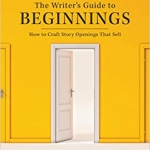Blog Titles to Tell “The Truth”
Late last year, journalists at National Geographic Magazine teamed up with AARP to explore “how Americans perceive aging as we emerge from the COVID pandemic”. There were a number of great articles in the AARP Bulletin issue, but what was so interesting to me as a blog content writer was the way the word “truth” kept appearing in some of the titles: “The New Truth About Aging”,”The New Truth About Voting Laws.”
“Your blog headline is the first impression a reader will have with your content. It can be their reason for clicking or their reason for brushing your post aside.,” observes the createmytherapist website.com. “A catchy headline could cause someone to pause, pique their interest and make them hungry for more of the content they’ll find in your blog post. It’s also one of the most important factors for your search engine optimization (SEO)”.
For me as a blog content writer, Truth-Abouts make for compelling titles. There’s a hint of mystery, a promise an expose, perhaps – as a reader, I feel as if I am going to be given the “real scoop” There’s something enticing about a title promising to “bare the truth”, especially when it concerns a topic on which we didn’t expect there to be any secrets to speak of.
At Say It For You, we use “Truth-About’ blog posts with three basic purposes in mind:
1. To de-mystify a subject.
2. To myth-bust, addressing misunderstandings about a product or service
3. To offer actionable steps readers can take
Helping readers sort truth from myth is one important use for business blogs. In the natural order of business, many misunderstandings about a product or service present themselves, and shining the light of day on misinformation shines light on your own expertise in your field.
Even when there is no final answer, blog content writers can summarize the different schools of thought and recap the research that is being done in the field. That in itself can go a long way towards making your blog a “go-to” place for readers seeking information relating to your industry or profession.
Blog titles “to tell the truth” can be a very useful content writing idea!







Follow us online!